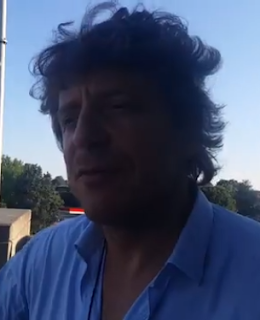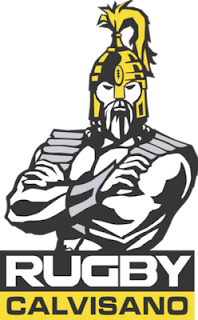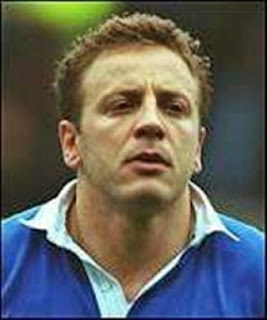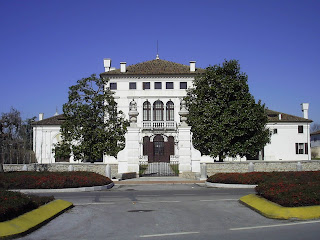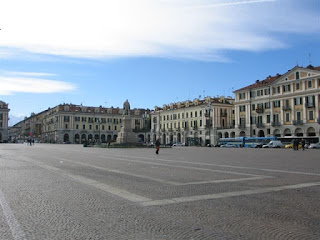Ex-Treviso star has won 61 international caps
.jpg) |
| Tommaso Allan in the green colours of Benetton Treviso, his home for five years |
A specialist fly-half, Allan is third in the all-time points scoring chart for the Azzurri, having amassed a total of 327 points, including 12 tries and 54 conversions. Only Diego Dominguez and Stefano Bettarello, both of whom also played at fly-half, scored more points for the national team in their careers.
Currently playing for Harlequins in the English Premiership, Allan spent five seasons playing for Benetton Treviso, one of Italy’s most famous and successful clubs.
Allan was born into a rugby-playing family. His mother, Paola Berlato, was herself an international player, with four caps for the Azzurre at scrum half; his father, William, born in Scotland, spent two years playing for the rugby team of Thiene, a small city in Vicenza province. His father’s brother, John, won nine international caps for Scotland and 13 for South Africa.
Tommaso began playing himself at around the age of six, training at the Petrarca Padova youth academy.
His father’s career, however, meant that the family left Italy and Allan acquired his rugby education in England, training with the London Scottish and Wasps academies, and then in South Africa where, in 2012, he was a member of the Western Province under-19 team that won the Currie Cup.
When his father took the family back to Scotland, Tommaso’s dual passport status meant he was eligible for Scotland’s junior teams and he was selected at under-17, under-18 and under-20 levels, competing in both the World Cup and the Six Nations at youth level.
.png) |
| Allan being interviewed after his Harlequins debut |
They noted his talent and brought him to the attention of Jacques Brunel, the Frenchman who was then Italy’s coach.
When Brunel named Allan in his 35-man training squad for the 2013 Tests against Australia, Fiji and Argentina, the player had to make a choice between playing for Italy or Scotland at senior level.
Ultimately, he decided that the opportunity to play international rugby at the age of 20 was something he could not turn down and opted for the Azzurri, making his debut in the match against Australia, coming off the bench to score.
The following year he made his debut in the Six Nations championship, playing for Italy against Wales, France and Scotland. Thereafter, he became a regular in the Azzurri line-up. The following year he was a member of the Italy team that defeated Scotland at Murrayfield in the Six Nations, only the country’s second victory away from Italian soil since they were admitted to the Six Nations in 2000.
After that 2015 victory, Italy went another seven years without recording a single success, home or away, in the competition. The run ended when they beat Wales by a single point in Cardiff in March, 2022.
.jpg) |
| Allan in action for the Italy national team |
He made Treviso his home, settling there with his girlfriend, Benan, a Turkish-born student he had met on holiday in Barcelona.
After sharing an apartment near Benetton Treviso’s base at the Ghirada sports complex south of Treviso, they were married at the Villa Condulmer, a 17th-century Venetian villa built in the Palladian style near Mogliano Veneto, a town between Treviso and Mestra.
While Tommaso pursued his career, Benan, who specialises in neurosciences, continued her education at the University of Padua, where she obtained a PhD.
Allan left Benetton Treviso in 2021 to join Harlequins, who play at The Stoop, their home in Twickenham, South West London. He told the current Italy coach, the New Zealander Kieran Crowley, not to consider him for selection while he gives full attention to establishing himself in the Premiership but has not ruled out a return to international duty.
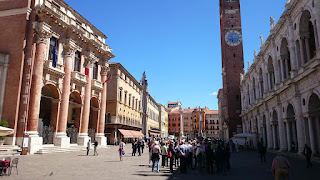 |
| The Piazza dei Signori is Vicenza's main square, attraction thousands of visitors in the summer |
Known as both the city of Palladio and, on account of its historical trade in precious metals, the ‘city of gold’, Tommaso Allan’s home city of Vicenza is one of the gems of Italy’s Veneto region, with a centre rich in beautiful architecture, much of which has been built or influenced by the 16th century architect Andrea Palladio, who also left his mark on the area by building many impressive villas in the countryside around Vicenza. The most famous of these is the symmetrically four-sided Villa Almerico Capra, commonly known as La Rotonda. There are some 23 buildings in the city itself that were designed by Palladio, including perhaps the city’s most popular attraction, the Teatro Olimpico, which was his last work.
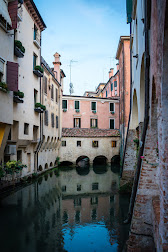 |
| Canals are a feature of Treviso's urban landscape |
For many visitors to Italy, Treviso is no more than the name of the airport at which they might land en route to Venice, yet it is an attractive city worth visiting in its own right, rebuilt and faithfully restored after the damage suffered in two world wars. Canals are a feature of the urban landscape – not on the scale of Venice but significant nonetheless – and the Sile river blesses the city with another stretch of attractive waterway, lined with weeping willows. The arcaded streets have an air of refinement and prosperity and there are plenty of restaurants, as well as bars serving prosecco from a number of vineyards. The prime growing area for prosecco grapes in Valdobbiadene is only 40km (25 miles) away to the northeast.
Also on this day:
1538: The birth of painter Gian Paolo Lomazzo
1575: The birth of Maria de’ Medici, Queen of France
1925: The birth of chocolatier Michele Ferrero
1977: The birth of astronaut Samantha Cristoforetti
